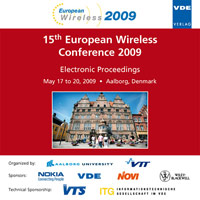Distributed Wakeup Scheduling Scheme for Supporting Periodic Traffic in WSNs
Conference: European Wireless 2009 - 15th European Wireless Conference
05/17/2009 - 05/20/2009 at Aalborg, Denmark
Proceedings: European Wireless 2009
Pages: 6Language: englishTyp: PDF
Personal VDE Members are entitled to a 10% discount on this title
Authors:
Khader, Osama; Willig, Andreas; Wolisz, Adam (Telecommunication Networks Group, Technische Universitat Berlin, Berlin, Germany)
Abstract:
In many applications in wireless sensor network source nodes generate and send periodic traffic to the sink through a number of forwarder nodes. In such a multihop network forwarders have forwarding duties but should, on the other hand, to spend as much time as possible in an energy-saving deep-sleep mode. In this work we explore decentralized approach to organize the wake-up process of the forwarders with the aim to let them wakeup at “just the right time” to catch an incoming packet, forward it and go quickly back to sleep mode. A key assumption for this work is that the forwarders do not know the traffic period beforehand, but they have to estimate the period and maintain their estimate over time. A key difficulty is that the period estimation and the scheduling of wakeup times will have to deal with jitter in the packet inter-arrival times. If a packet arrives before the forwarder wakes up, it is lost. This opens up a tradeoff between loss rates and the sleeping activities of the forwarder: when the forwarder wakes up “early”, the packet loss rate will be low but the forwarder spends more energy, and vice versa. The main contributions of this report are the following ones: (a) we design and implement local estimators for traffic period and jitter; (b) we design and implement a scheduling scheme by which a forwarder locally decides when to sleep and when to wakeup; and (c) we adjoin mechanisms to this scheme that allow to update the period and jitter estimates and to react to changes in the locally observed loss rate. We use measurements and simulation to evaluate our proposed algorithms.


